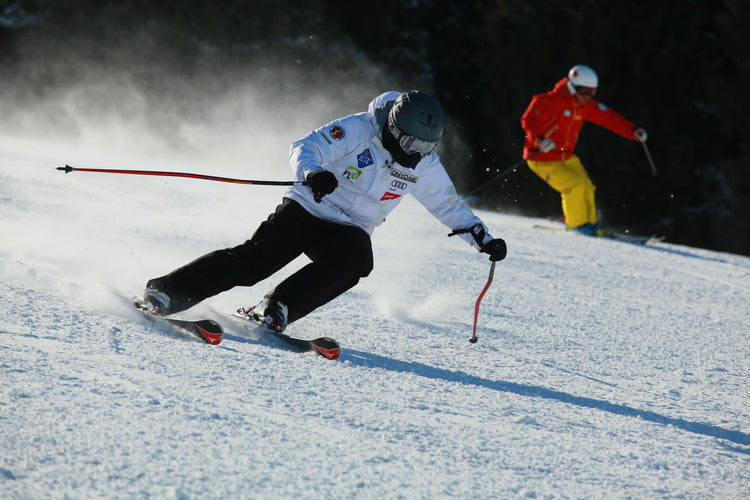Choosing the Right Tow Rope for Your Summer Fun: A Comprehensive Guide
Summer is here, and the call of the open water is strong! Whether you're a seasoned water sports enthusiast or a curious newcomer, one thing is certain: a reliable tow rope is essential for a safe and exhilarating experience. With so many options available, finding the perfect tow rope for your needs can seem daunting. But don't worry, we're here to guide you through the key factors to consider so you can choose the ideal rope for wakeboarding, water skiing, kneeboarding, or towing a tube.
Understanding the Basics of Tow Ropes:
Before diving into the specifics, let's clarify the different types of tow ropes and what makes them suitable for particular activities. Tow ropes are essentially designed to connect a boat to a rider or a towable device, allowing for a smooth and controlled tow. The length, construction, materials, and handle design play a crucial role in determining the tow rope's suitability for your chosen activity.
Tow Rope Length: The Distance Factor
The length of your tow rope is one of the most important factors to consider. This determines the distance between you and the person or device you are towing. Here's a general guideline for different water sports:
- Wakeboarding: A shorter rope (around 65-75 feet) is ideal for wakeboarding, allowing for quick turns, maneuvers, and maintaining a close connection to the boat. This shorter length provides better control and responsiveness for executing tricks and riding the wake.
- Water Skiing: For water skiing, a longer rope (around 75-85 feet) is typically preferred for longer runs, achieving higher speeds, and gaining greater momentum before performing tricks. The added distance allows skiers to develop speed and stability before attempting aerial maneuvers.
- Kneeboarding: Kneeboarding ropes are similar to water ski ropes, often ranging from 75 to 85 feet. This length provides sufficient space for kneeboarders to build up speed and perform various turns and tricks while maintaining a comfortable distance from the boat.
- Towing Tubes: Tubes can handle a bit more slack, so a longer rope (around 75-85 feet) is suitable for more thrills. The extra length allows for higher speeds and more intense spins and turns, making the ride more exciting for passengers on the tube.
Tow Rope Construction: Single or Double Handle?
The construction of the tow rope is another essential factor to consider. There are two primary types:
- Single Handle: Single-handle tow ropes are the most common type. They offer a basic design with a single handle at the end, providing a simple and reliable connection for towing. The New Evolution 75' Single Handle Tow Rope w/ Fast Start Deep-Vee is a popular option, known for its durability and smooth towing capabilities.
- Double Handle: Double-handle tow ropes feature two handles, allowing for different grips and tow styles. This type offers more versatility, enabling riders to adjust their grip for different maneuvers or to share the tow with multiple riders.
The New Evolution 75' Single Handle Tow Rope w/ Fast Start Deep-Vee features a 'Fast Start Deep-Vee' design, which helps provide a smooth, controlled tow. This design minimizes the initial pull, making it easier to get started and ensuring a comfortable ride for the rider.
Tow Rope Materials: The Foundation of Durability
Tow ropes are typically made from durable materials that can withstand the constant tension and pulling forces experienced during water sports. Some common materials include:
- Nylon: Nylon is known for its strength, flexibility, and resistance to abrasion. It's a popular choice for tow ropes due to its ability to handle heavy loads and maintain its shape even after repeated use.
- Polyester: Polyester is another durable option, often used in tow ropes for its resistance to water absorption and UV damage. It's less stretchy than nylon, which can provide a more responsive tow.
- Polyblend: Polyblend tow ropes combine the best qualities of both nylon and polyester, offering a balance of strength, flexibility, and resistance to wear and tear. These ropes are a good all-around choice for various water sports.
When selecting a tow rope, look for materials that are UV-resistant and water-resistant to ensure longevity and prevent deterioration from the sun and water exposure. A well-made tow rope should be able to withstand the elements and provide many seasons of enjoyable use.
Tow Rope Handle Types: For Comfort and Control
The handle of your tow rope plays a vital role in comfort and control. Different handle types offer unique advantages:
- Foam Handles: Foam handles provide a comfortable grip and are often found on longer tow ropes, particularly those designed for water skiing or tubing. The foam provides a soft, cushioned feel, reducing hand fatigue during extended use.
- Rubber Handles: Rubber handles offer a secure grip, even in wet conditions. They are often found on shorter tow ropes, like those used for wakeboarding, where a firm and reliable grip is crucial for performing tricks and maneuvers.
- Wakeboard Handles: Wakeboard handles, like the New Evolution 5' Wakeboard Handle Section w/ 15" Handle, feature a shorter design and are often preferred for wakeboarding. These handles are designed to be comfortable and secure for both hands and provide better control and responsiveness while executing tricks and maintaining balance.
The New Evolution 5' Wakeboard Handle Section w/ 15" Handle is a popular choice for its comfortable and secure grip, offering a durable construction that can withstand heavy use. The shorter design allows for a more precise feel and control, making it an excellent choice for wakeboarders of all skill levels.
Tow Rope Safety: Always a Priority
Safety should be your top priority when using a tow rope. Always inspect your rope before each use, checking for signs of wear, tear, or damage. Look for fraying, cracks, or any weakening in the rope's construction. Ensure the rope is properly connected to your boat and the towable device using the appropriate clips or attachments. Make sure the connection is secure to prevent accidents.
When out on the water, always be aware of your surroundings and other boaters. Stay within designated areas, observe speed limits, and communicate with others on the water. Remember that a tow rope can be a powerful force, and it's essential to use it responsibly and with caution.
By considering the factors outlined above, you can choose the perfect tow rope to enhance your summer water sports experience. Remember, the right rope can make a world of difference, ensuring a fun, safe, and unforgettable time on the water.


